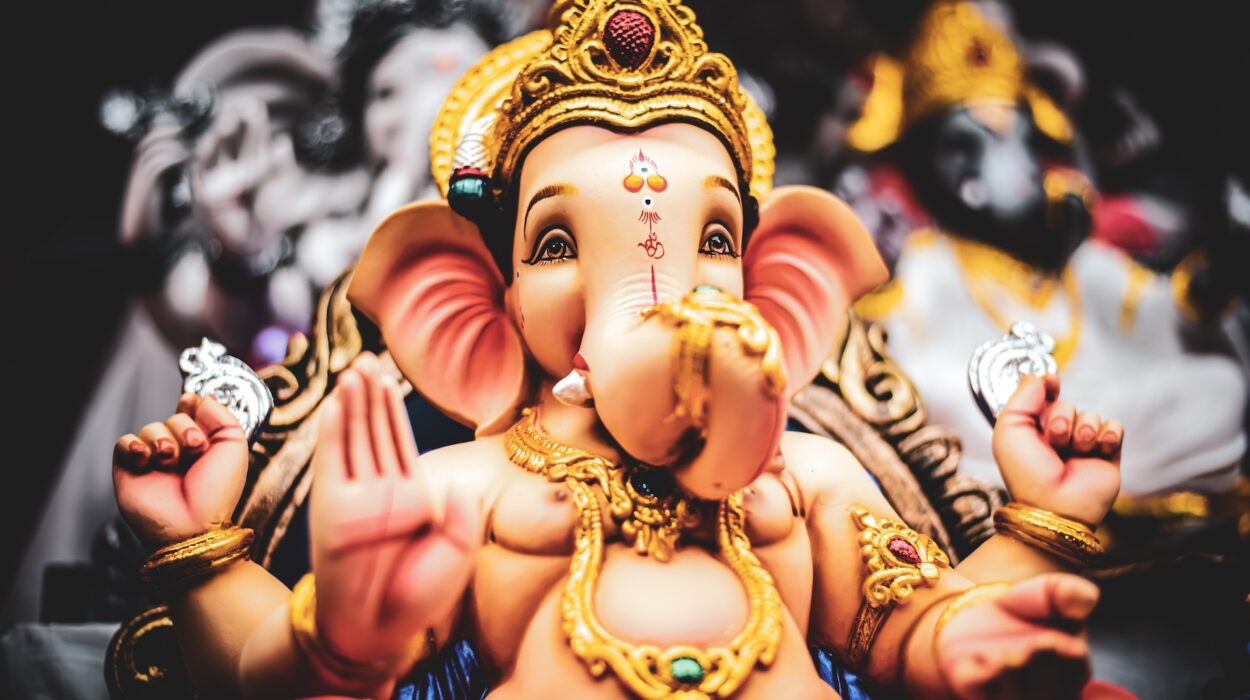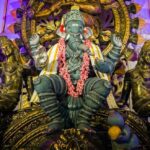The festival of Ganesh Chaturthi, also referred to as Vinayaka Chaturthi, is one of the most vibrant and well-known in India. This lavish festival honors Lord Ganesha, the Hindu god of knowledge, wealth, and fresh starts who has the head of an elephant. Depending on the lunar calendar, it usually lasts for ten days in the months of August or September. During this time, Lord Ganesha devotees from all over India and the rest of the world congregate to ask for his blessings.
The Mythological Significance
Ganesh Chaturthi has its roots in traditional Hindu mythology. It is a common misconception that Lord Ganesha was created from the dirt on Goddess Parvati’s body and given life by her, Lord Shiva’s wife. He was given the responsibility of watching over her quarters, and she gave him the order to keep everyone out while she took a bath.
Ganesha blocked Lord Shiva’s entrance when he tried to enter after he had finished his meditation because he was oblivious to Shiva’s presence. This resulted in a bloody fight between the two, and Lord Shiva beheaded Ganesha out of rage. Realizing his error, he attempted to make up for it by giving Ganesha an elephant’s head, giving rise to the well-known deity with an elephant head.
To honor the birth of Lord Ganesha and to ask for his blessings on wisdom and prosperity, people celebrate Ganesh Chaturthi.
The Great Festival
While there are regional variations in Ganesh Chaturthi celebrations, there are some traditions that are followed nationwide. Installing intricately made idols of Lord Ganesha in homes and public spaces marks the start of the festival. These idols can range in size from tiny clay figures for private worship to enormous ones for public display, and they are frequently made months in advance by skilled artisans.

The idol is worshipped with great devotion once it has been installed. Devotees present Lord Ganesha with flowers, fruits, sweets, and coconuts. Aarti, a ritual that involves waving lamps, and bhajans, devotional songs, are performed, infusing the space with spiritual energy.
Ganesh Chaturthi is marked in a significant way by public celebrations. Massive processions carrying exquisitely decorated Ganesha idols are carried through the streets of many Indian cities, particularly Maharashtra in the west. These processions are a visual and auditory spectacle that include traditional music, dance, and cultural performances.
Visarjan – The Immersion Ritual
The idol’s immersion, known as “Visarjan,” is one of Ganesh Chaturthi’s most striking aspects. The idols are submerged in rivers, lakes, or the sea on the tenth day of the festival as a tearful farewell to Lord Ganesha by the worshippers. The belief that Lord Ganesha returns to his heavenly abode carrying the troubles and difficulties of his followers is symbolized by this ritual.
The Visarjan processions are impressive to see, with throngs of people cheering and dancing as they carry the idols to the immersion sites. When the idols are gently lowered into the water, the festival’s fervor is at its height, and it is a moving moment.
Eco-Friendly Ganesh Chaturthi

Concerns about the festival’s impact on the environment have gained attention in recent years. Traditional idols are frequently made of plaster of Paris and painted with toxic chemicals, which, when submerged in water bodies, can harm aquatic ecosystems. To combat this, many groups and individuals have shifted to eco-friendly idols made of clay and painted with natural pigments, minimizing the festival’s negative environmental effects.
The Appeal To All
Its widespread appeal is what makes Ganesh Chaturthi truly remarkable. It crosses religious and cultural barriers, enticing participants from all walks of life to join in on the celebration. It acts as a unifying factor, bringing together communities in jubilation and devotion.
Ganesh Chaturthi Worldwide
Due to the Indian diaspora, Ganesh Chaturthi has become international. The festival is fervently observed in nations with sizable Indian populations, including the United States, Canada, and the United Kingdom. The festival’s openness and cultural diversity are highlighted by its widespread appeal.
Conclusion
Ganesh Chaturthi is a cultural extravaganza that honors art, music, and the spirit of community as well as being a religious festival. It teaches us the value of looking for knowledge, getting rid of barriers, and welcoming fresh starts. Ganesh Chaturthi continues to be a festival that perfectly encapsulates India’s rich cultural heritage and spiritual heritage with its opulence and heartwarming rituals.
On this Ganesh Chaturthi, may Lord Ganesha’s blessings bestow upon you wisdom, fortune, and joy!
FAQs
What does it mean to submerge Ganesha statues in water during Ganesh Chaturthi?
The practice of submerging Ganesha idols in water during Ganesh Chaturthi is known as “Visarjan.” It represents Lord Ganesha leaving for his heavenly abode and carrying the troubles and difficulties of his followers with him. It serves as a means of saying goodbye to the deity and requesting his reappearance the following year.
How can I observe Ganesh Chaturthi in an environmentally friendly way?
To lessen the impact on the environment, Ganesh Chaturthi celebrations are becoming more and more popular. Here are a few advices:
Instead of plaster of Paris idols, choose clay idols because they can be decomposed.
Choose non-toxic, organic colors to decorate the idol.
Use paper and cloth as decorations instead of harmful materials.
When making offerings and decorating, stay away from single-use plastic items.
To avoid contaminating natural water sources, engage in responsible immersion by using artificial tanks or designated immersion sites.
Is Ganesh Chaturthi only a Hindu festival, or do people from other religions participate?
Ganesh Chaturthi is a Hindu festival, but it has a universal appeal that cuts across all boundaries of belief. As a sign of cultural harmony, people from different religious backgrounds frequently take part in celebrations in India. People of various faiths frequently attend the festivities, demonstrating the inclusive and multicultural nature of this festival.







